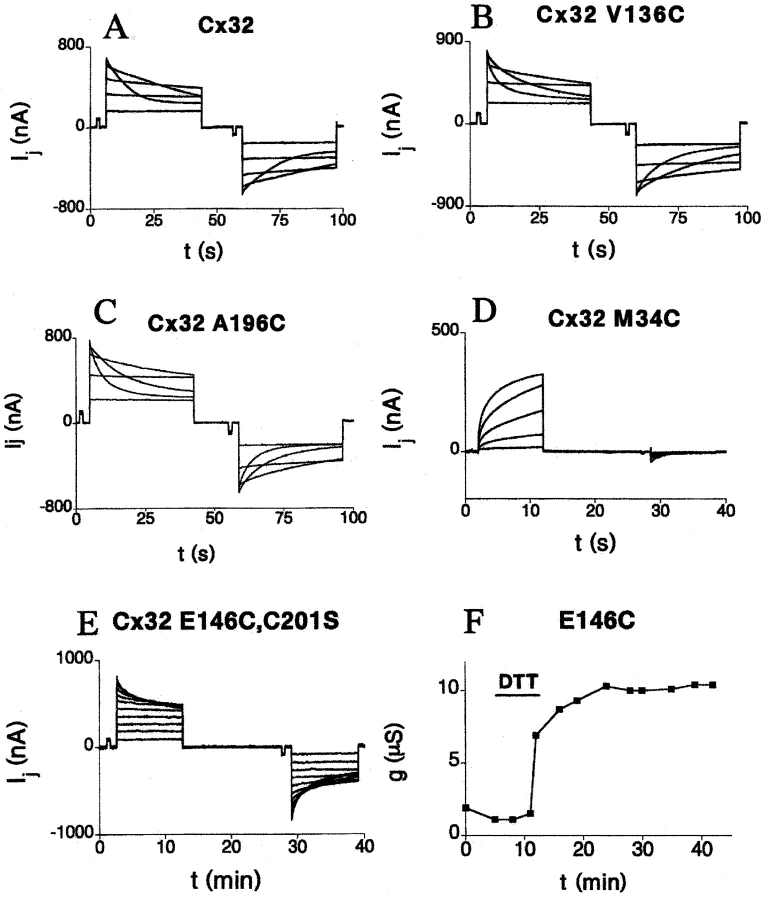Figure 3.
Transjunctional currents recorded from paired Xenopus oocytes expressing wtCx32 and several representative cysteine substitution mutants. Oocytes expressing mutants V136C (B), A196C (C), and E146CC201S (E) were paired homotypically (mutant/mutant), and showed gating responses minimally modified from wild-type Cx32 (A). Note that the E146C mutant alone was nonfunctional, and currents could only be recorded for the double mutant or after DTT perfusion of the single mutant (F). (D) M34C was paired heterotypically with wtCx32, with positive polarity defined relative to the mutant-expressing oocyte. These channels, which are closed at rest and open in response to positive transjunctional voltages, are an example of the reverse-gating phenotype discussed in Fig. 2 and the text. In all cases, transjunctional currents were recorded from oocytes clamped at −40 mV, whereas the partner was pulsed in 20-mV increments from the same holding potential.

